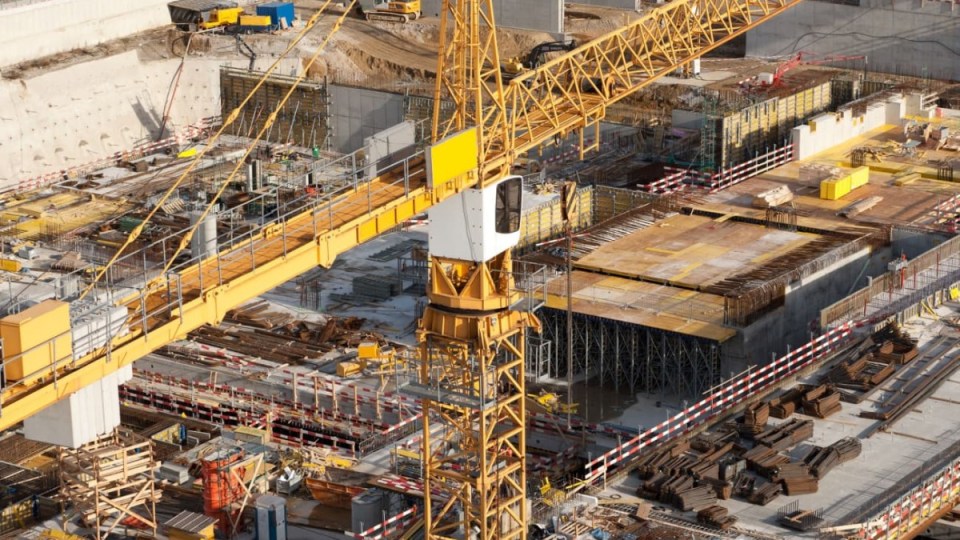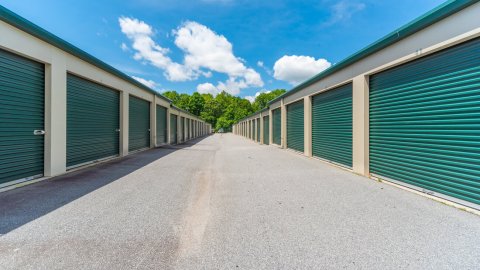Since 2010, industrial and warehousing construction has caught the attention of developers and investors alike, thoroughly dominating the national commercial pipeline.
New York — which continued to witness the largest amount of office space completions — has faced mounting competition from Southern metro areas, while the retail sector has been trying to slow and eventually reverse its decline.
So, to get a clearer understanding of some of these commercial real estate development trends — as well as the total square footage of new office, industrial and retail space that has been added across the U.S. — we used construction data from CommercialEdge to analyze activity between 2010 and 2021. Notably, our study is broken up into two sections: The first looks at commercial real estate (CRE) completions across the four major regions (Northeast, South, Midwest and West), while the second section follows the same outline, but with a focus on the most prominent metropolitan statistical areas (MSAs).
Executive summary (click on a highlight to skip to the appropriate section):
- National &Regional Highlights:
- Metro Highlights
Keep reading to find out more about the major clusters of commercial real estate development since 2010.
National &Regional Highlights
2021 U.S. Office, Industrial & Retail Development Up 237% Compared to 2010
For more than a decade, the U.S. witnessed robust growth in its construction activity within the commercial real estate sector. In fact, the ripple effects of the financial crisis on real estate development could still be felt in 2010, when nationwide output totaled 141 million square feet across all three use types. However, by 2021, that number had increased by an impressive 237% to a grand total of 475.2 million square feet – despite the disruption caused by both the COVID-19 pandemic and supply chain bottlenecks.
The South had a particularly strong showing last year, as its completions total hit 198 million square feet. Although the rebound following the pandemic slowdown was perhaps less spectacular in the other three regions, all of them demonstrated a renewed appetite in the market from developers and investors alike. For instance, some 120.2 million square feet of commercial real estate space was delivered in the West in 2021, while roughly 99 million square feet of new commercial space was completed in the Midwest. Lastly, the Northeast upped its inventory by 57.8 million square feet.
.
However, to better understand the evolution of commercial real estate development since 2010 — as well as the key role played by the South during this period — we need to take a look at the contributions made by various regions within the U.S.
The dynamic chart below illustrates the evolution of the total U.S. development across the four regions between 2010 and 2021, as well as the separate trends across the three commercial real estate sectors (office, industrial and retail). Use the arrows to flip through the various slides and press play to view the distribution of completions across the regions.
More Than 900 Million Square Feet of New Office Space Added Since 2010
Overall, office projects throughout the U.S. represented nearly 24% of overall completions, totaling 932 million square feet. Of those, 366.4 million square feet were delivered in the South, followed by 254 million square feet in the West.
Analyzing the evolution of office development across the surveyed period, we can see how the Northeast’s trajectory has been significantly more sinuous than that of the other regions. Clearly, this region recorded noticeable hikes and dips even before the onset of the pandemic.
For example, in 2013, office completions in the Northeast jumped 134% year-over-year (Y-o-Y), reaching a record high of 21.4 million square feet during the surveyed period. This was due to several major projects being delivered that year, including the 2.5-million-square-foot 4 World Trade Center in Manhattan and the 5.8-million-square-foot Industry City complex in Brooklyn, which was the subject of a massive adaptive reuse effort.
While office development in the Northeast slowed in 2017 (totaling 9.8 million square feet), all of the other regions continued their upward trend in this regard. Chief among them was the South, where lower costs of living, business-friendly legislation, and vibrant communities attracted the attention of businesses and talent alike. Along with the region’s increasing role in the tech scene, this drove up demand for office space in Dallas; Austin, Texas; Atlanta; and other metro areas in the South.
As a result, in 2017, the region saw the completion of roughly 37.6 million square feet of new office space. Construction activity then hovered around this high plateau in the following years and remained above the 30-million-square-foot mark even in 2020.
There were some regional particularities in office development in the West and Midwest, as well. For instance, office construction in the West reached its highest output levels between 2017 and 2019 (above the 30-million-square-foot mark). However, completions in this region also saw a steeper decline in 2020 compared to the rest of the U.S., with completions dropping by 29% Y-o-Y, for a total of 22.4 million square feet.
Meanwhile, the output of the Midwest office pipeline was the most evenly spread out among the four regions. From 2014 onward, yearly inventory increases here ranged from 12.5 to 15 million square feet of new space, only dropping below that threshold in 2021.
42% of Industrial Construction Located in the South
Since 2010, industrial development has been trending decidedly upward across the nation. Despite a couple of dips throughout the surveyed period, the U.S. industrial pipeline added a grand total of 2.66 billion square feet to its inventory — a record high for the surveyed period.
Once again, the South had the largest contribution, accounting for approximately 42% of all completions. Additionally, warehouse and industrial output in major real estate markets across the West and Midwest made up another 48% to contribute 689 million and 587 million square feet of space, respectively. At the same time, the Northeast pipeline remained below the 300-million-square-foot mark and represented 10% of nationwide industrial developments throughout the period we analyzed.
To illustrate the growth of this sector, we can compare yearly increases in output. For instance, the number of industrial square feet delivered in the South went from 57 million in 2013 to 82 million the next year — the greatest year-over-year increase throughout the surveyed period for this region.
Likewise, the Northeast and Midwest also had significant increases in output in 2014, whereas completions in the West experienced almost uninterrupted growth from 2012 until 2019.
Retail Pipeline Shrinks by 64% From 2010 to 2021
Currently, retail is undergoing a long and complicated moment of reevaluation: It’s the only sector that has experienced a decrease in completions in 2021 compared to 2010. Specifically, across selected markets, output dropped 64% — from 24.4 million square feet at the start of the decade to roughly 8.7 million square feet last year.
Notably, 2015 marked the first bump in the road when retail development fell by 35% across the U.S. In total, 15 million fewer square feet of retail space was completed that year than in the previous 12 months. At the regional level, the Northeast experienced the largest percentage drop (44%), followed by the South (38%), West (32%) and Midwest (23%).
In terms of total square footage, the South had the most significant decrease in output across all four regions. Here, the retail pipeline shrank from a 2016 high of 23 million square feet to just 5 million square feet by 2021.
Then, as a wave of loans secured prior to the financial crisis began to reach their maturity date in 2017, a string of high-profile retail company bankruptcies followed, including the likes of Toys“R”Us, Sears and Radioshack. Consequently, retail construction numbers took a dive.
Of course, there were other contributing factors, as well. In particular, the runaway success of e-commerce — which only gained steamed during the pandemic — has forced the retail sector to reinvent itself in order to cut loses and find its new place in the larger economic picture.
Plus, since 2020, office construction has focused on meeting the growing demand for research and development (R&D) facilities and laboratories for biotech companies. As such, retail also had to contend with a heavy mix of hurdles, including the price and scarcity of key raw materials and fuel cutting into margins; inflation; and costs of living affecting consumers’ ability to spend.
Metro Highlights
CRE Construction Boom in Greater Dallas: 289 Million Square Feet Added Since 2010
In terms of total commercial real estate construction numbers since 2010, the first two positions were secured by Southern MSAs – Dallas (with 289 million square feet of new space) and Houston (with 208.5 million square feet of added space). Chicago came in third with a total of 201 million square feet of new commercial real estate space. It was closely followed by the Riverside, Calif. metro.
New York metro came in fifth – despite its dominance in office development – with roughly 131 million fewer square feet than the front-runner.
The remainder of the top 10 was comprised of three more MSAs from the South. That brought the number of entries from this region to five and a combined square footage of 786 million square feet of commercial real estate. Additionally, the Atlanta metro occupied sixth place, while the Washington, D.C. and Miami metros landed in ninth and tenth places, respectively.
New York’s Untouchable Lead: Metro Area Delivers 79 Million Square Feet of New Office Space
Once again, Southern MSAs had a strong showing in terms of their decade-long office construction. They were outranked only by New York, which earned first place with 78.7 million square feet. The next three spots were held by the Dallas, Houston and Washington, D.C. metros, all of which were within the same 45- to 48-million-square-foot range.
The West had four entries in the top 10, with the San Jose, Calif., metro being the highest-ranking in fifth place (37.8 million). It was followed by San Francisco, Los Angeles and Seattle, all of which came in above the 30-million-square-foot mark in terms of their office completions.
Midwestern & Southern MSAs Compete for Top 10 Industrial Completions
In terms of industrial completions, metros from the West and Midwest competed with the likes of Dallas, Houston and Atlanta for a spot among the top 10. And, while the Midwest had the highest number of entries on the list, the Southern metros actually raked up more total square footage for their completed projects (448.5 million square feet of industrial space).
Ultimately, Dallas ended up in the first position once again, with 215.7 million square feet of industrial and warehousing space added during the surveyed period. What’s more, as the Southern metro’s dominant display indicates, Dallas has benefited from the multiplier effect of this massive increase in its industrial pipeline, as demand for other commercial real estate in the region increased, as well: At the end of the surveyed period, Dallas also boasted the highest amount of retail completions (24.5 million square feet) and second-most office space added (48.8 million square feet).
There were also two other Southern MSAs within the top 10 for industrial completions: The Houston metro — which came in fourth — added roughly 141 million square feet of warehousing space to its inventory, followed by Atlanta with a total of 92 million square feet.
Outside of the South, the Riverside-San Bernardino, Calif., MSA came in second with a total of 188.5 million square feet. The only other Western metro area among the top 10 for this indicator was Phoenix, which had the sixth-largest number of industrial completions (76.4 million square feet).
In the Midwest, Chicago — which came in third — had the highest number of warehouse and industrial completions (163.5 million square feet) during the surveyed period. That said, Indianapolis, which added the second-largest amount (69 million square feet), had a significant lead over the next entries in this region (Columbus, Ohio, with 54.6 million square feet and Kansas City, Mo., with 51 million square feet).
Not to be outdone, the New York metro squeezed its way into the top 10. It was the only urban concentration from the Northeast to do so and placed eighth with 64 million square feet of industrial space added.
With demand for industrial and warehousing spaces at record highs, 42Floors can help you choose between a range of options across various U.S. markets. Use the interactive map and filters to find the properties that best suit your business needs:
More Than Half of Top 10 Metros for Retail Construction Located in the South
When it came to the retail pipeline, metropolitan areas from the South almost single-handedly made up the top 10 in terms of total completions. Between them, the six entries (Dallas; Houston; Miami; Washington, D.C.; Atlanta; and Austin, Texas) delivered roughly 88 million square feet of retail space out of the nationwide total of 307 million during the surveyed period.
In this case, the New York MSA only managed to climb to fourth place with 15 million square feet of retail space added throughout the decade. It was followed by another cluster of three Southern entries: the Washington, D.C.; Atlanta; and Austin, Texas, metros.
Methodology
We looked at all completed office, industrial and retail properties between 2010-2021.
Only office and industrial properties larger than 25,000 square feet were included.
Data collected on the retail sector relies on 70 U.S. markets and includes only buildings larger than 50,000 square feet.
Property city was mapped to MSA using Census list.
Property state was mapped to corresponding region using Census map.
Data extraction date: September 2022
Data sources: CommercialEdge





